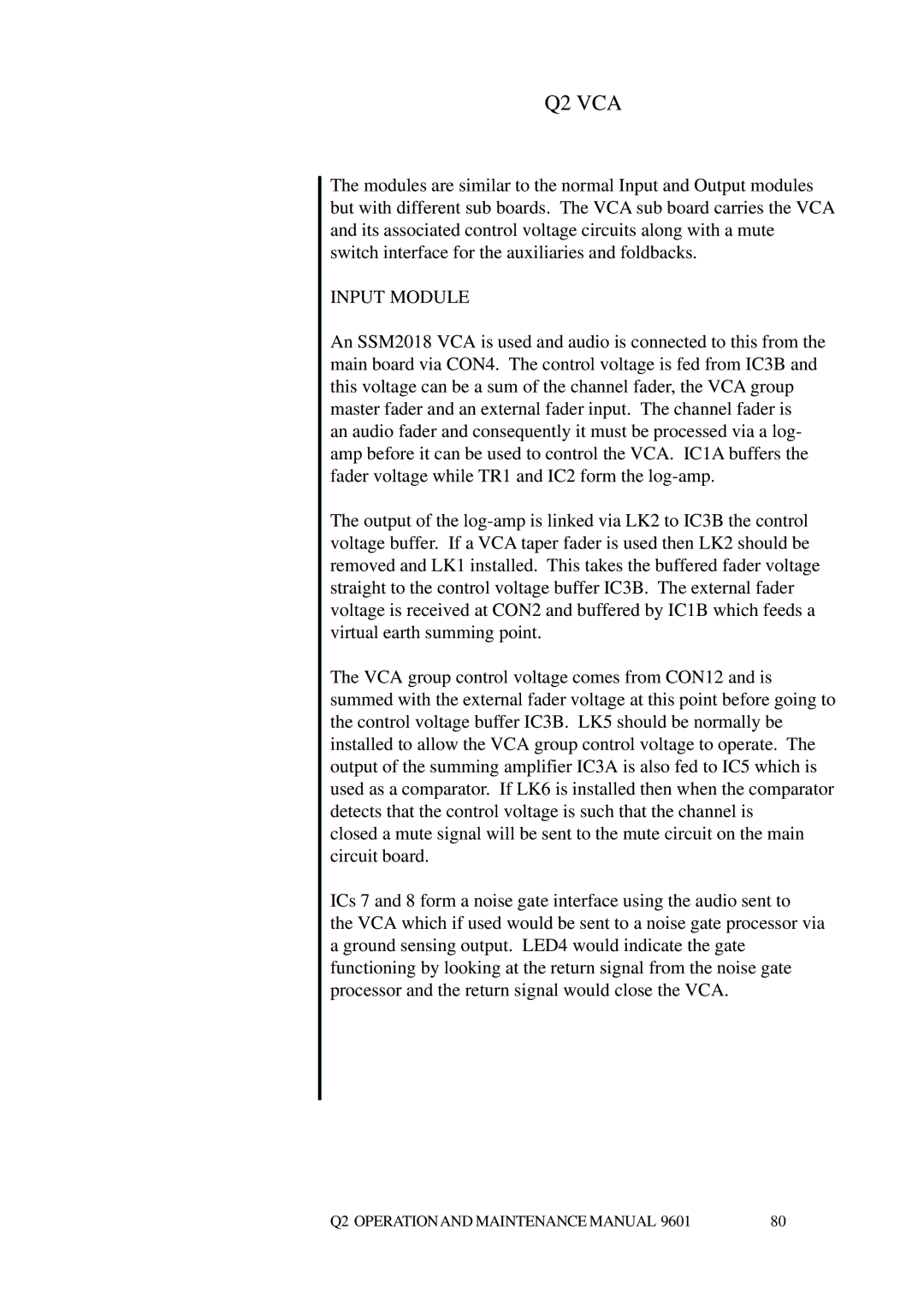Q2 VCA
The modules are similar to the normal Input and Output modules but with different sub boards. The VCA sub board carries the VCA and its associated control voltage circuits along with a mute switch interface for the auxiliaries and foldbacks.
INPUT MODULE
An SSM2018 VCA is used and audio is connected to this from the main board via CON4. The control voltage is fed from IC3B and this voltage can be a sum of the channel fader, the VCA group master fader and an external fader input. The channel fader is an audio fader and consequently it must be processed via a log- amp before it can be used to control the VCA. IC1A buffers the fader voltage while TR1 and IC2 form the
The output of the
The VCA group control voltage comes from CON12 and is summed with the external fader voltage at this point before going to the control voltage buffer IC3B. LK5 should be normally be installed to allow the VCA group control voltage to operate. The output of the summing amplifier IC3A is also fed to IC5 which is used as a comparator. If LK6 is installed then when the comparator detects that the control voltage is such that the channel is
closed a mute signal will be sent to the mute circuit on the main circuit board.
ICs 7 and 8 form a noise gate interface using the audio sent to
the VCA which if used would be sent to a noise gate processor via a ground sensing output. LED4 would indicate the gate functioning by looking at the return signal from the noise gate processor and the return signal would close the VCA.
Q2 OPERATIONAND MAINTENANCE MANUAL 9601 | 80 |
